Foolproof Pie Dough Recipe {Video}
This post may contain affiliate links. Please read my disclosure policy.
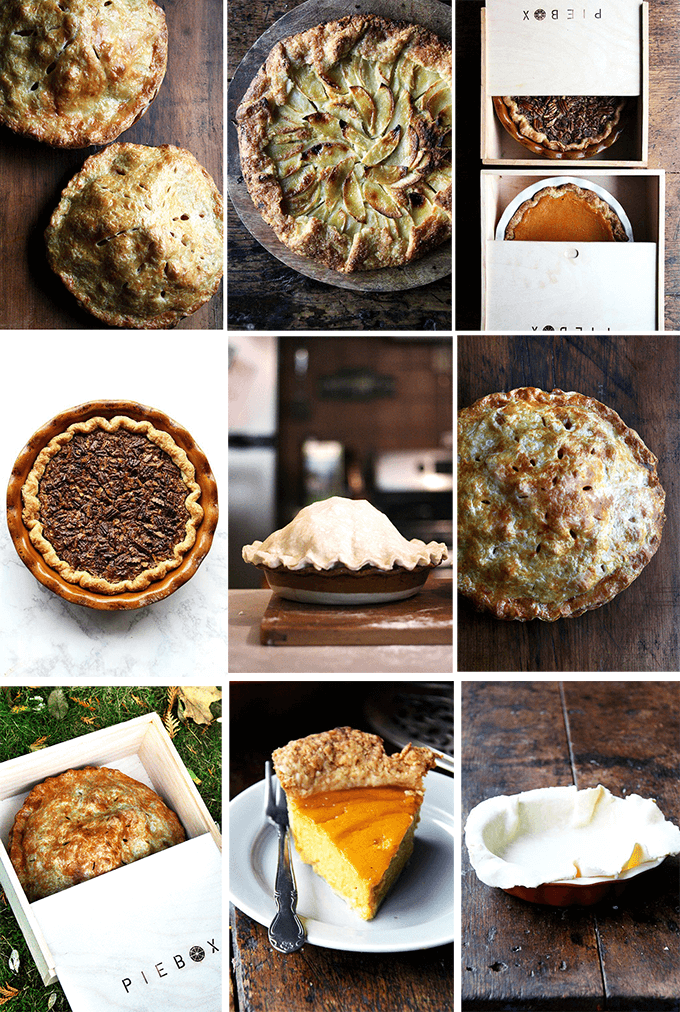
No matter which pie dough recipe you use, the principles of making it will be the same: keep the ingredients cold, cold, cold. Let’s review:
Homemade Pie Dough
Purists will say that making a pie dough in the food processor is a no-no, but I find it works very well—so does Martha Stewart!—and if you are making a lot of dough, using a processor will save you a lot of time. (If you don’t have one, don’t worry: there are instructions below for making it without.)
The French Trick to Foolproof Pie Dough
Ten years ago I took a cooking class at Antoine’s Cafe in San Clemente, California during which the French instructor, Caroline Cazaumayou, wowed the audience with a tea towel.
After pulsing a few ingredients together in the food processor, she dumped the crumbly dough into the center of a tea towel. She then pulled up the corners of the towel and twisted it into a beggar’s purse. When she opened it up, the audience gasped: the crumbles had united to form a perfect round of dough.
This tea towel trick achieves two things:
- A tender crust, because the crumbly dough ensures it has not been over worked.
- A perfectly round shape, the ideal starting point for many a pie and/or tart.
This video demonstrates the process:
A few things to keep in mind:
- To start the pie-dough making process, cut your butter into smallish slices or cubes, place them in a bowl, and stick them in the fridge. Fill a large liquid measuring cup with ice and water. Set aside.
- If you want to make several batches of dough, rather than multiply the recipe and load up your food processor, make separate batches consecutively. No need to clean the processor in between batches.
- When I make the dough and plan on using it shortly thereafter, I prefer rolling it out immediately, fitting it into the pie plate, then chilling the dough-fitted pie plate in the freezer for at least 30 minutes.
- When you are rolling out your dough, try to keep tools and ingredients cold — my aunt uses a marble rolling pin that she keeps in the freezer. (I never remember to freeze my rolling pins, but it’s something to keep in mind.)
This video shows how to roll out pie dough and make a simple fluted edge:
How to Make Foolproof Pie Dough: A Step-by-Step Guide
Measure your ingredients.
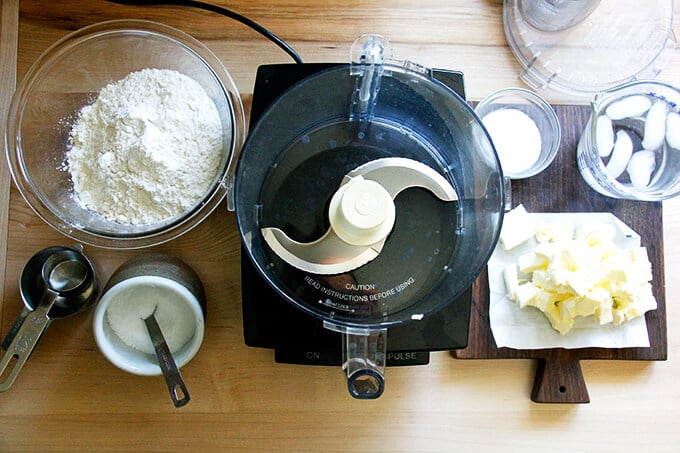
First pulse the flour, sugar and salt together.
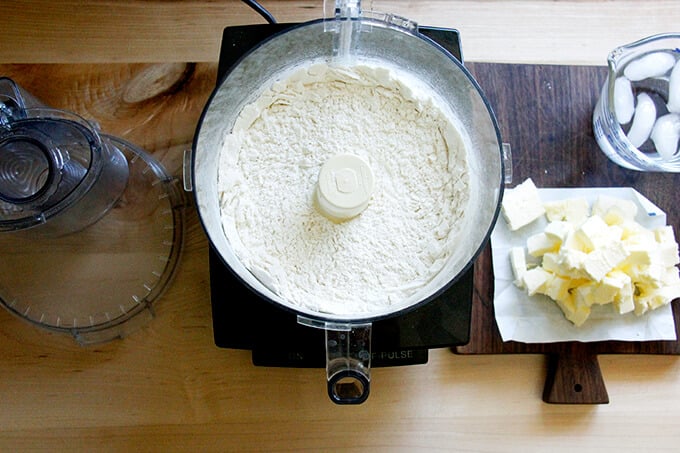
Add the butter and pulse 10 times (about).
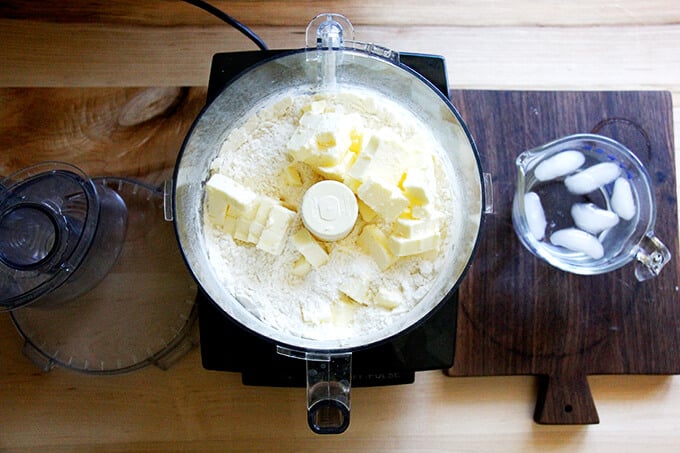
The butter should be the size of peas (about).
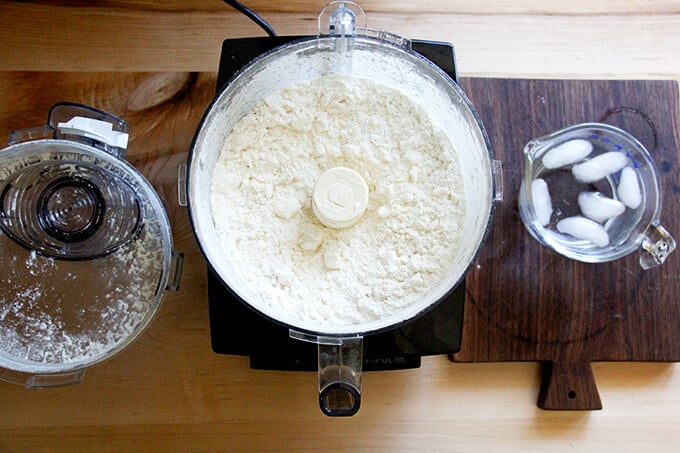
Add ice water.
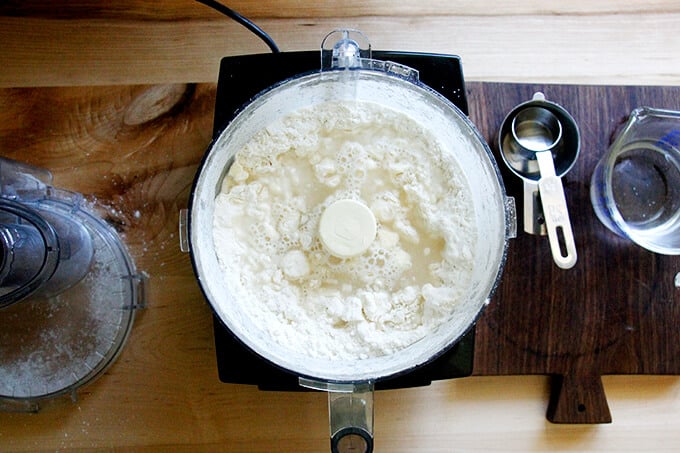
Pulse again about 10 to 15 times or until the dough is still crumbly, but holds together when pinched.
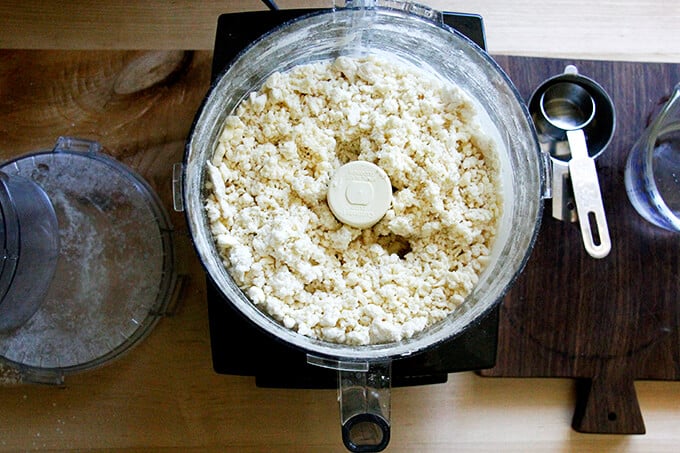
Divide dough between two clean tea towels. I love these tea towels by Now Designs.
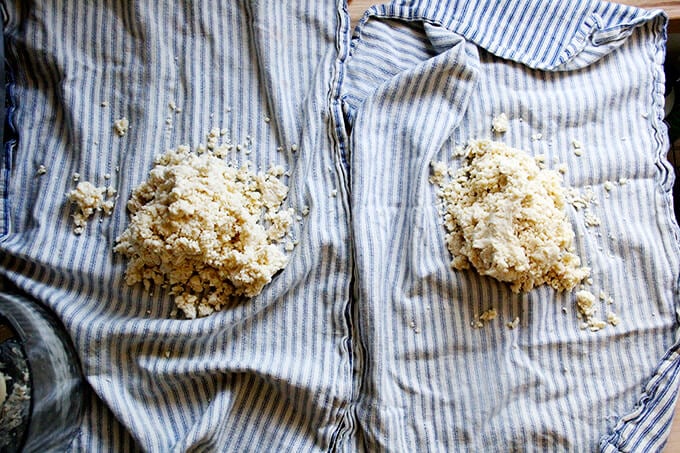
Gather towel into a beggar’s purse, and squeeze to form a round.
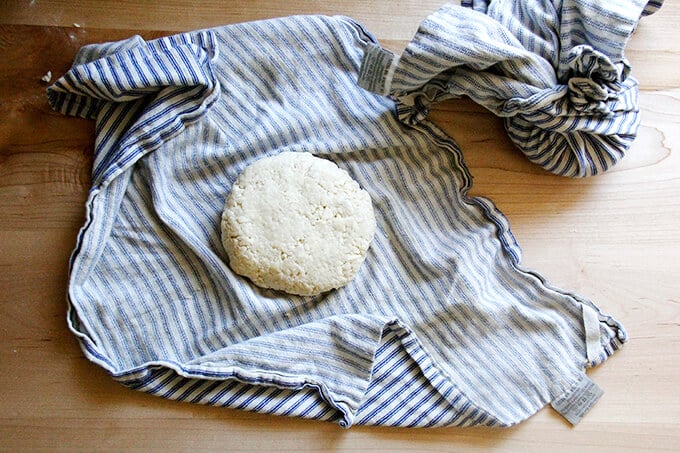
Transfer one to the freezer for a future use.
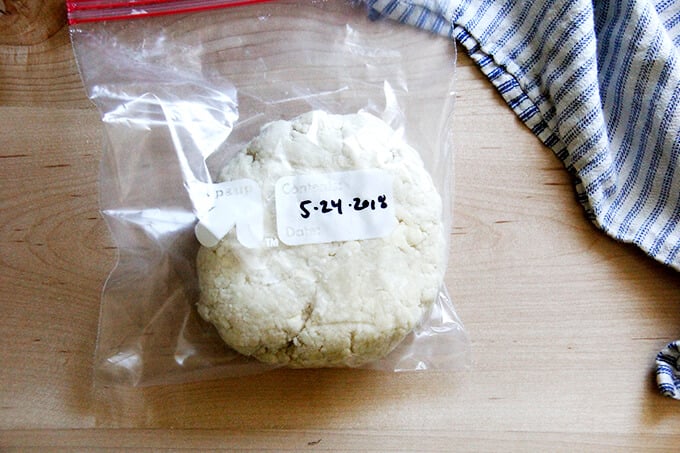
On a lightly floured surface, roll out the remaining round into a circle about 12- to 13-inches in diameter.
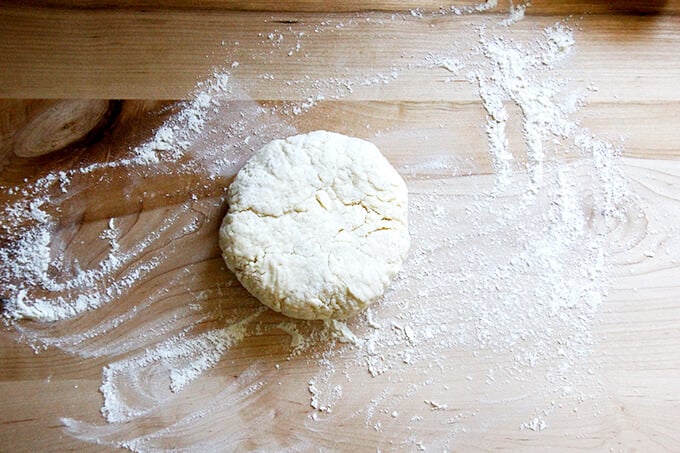
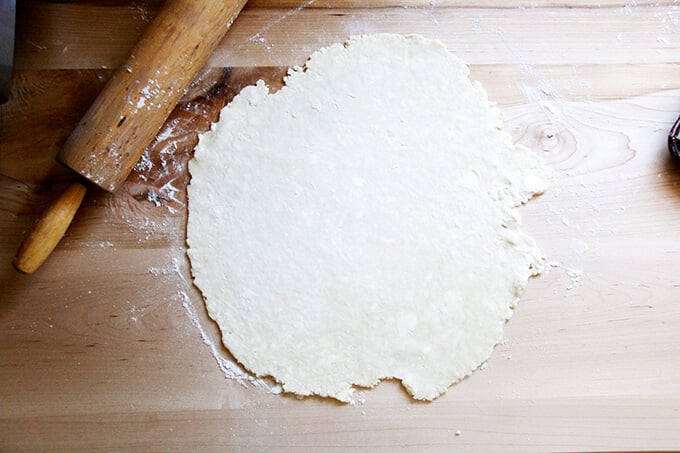
Fold dough into quarters to easily transfer to a pie plate or tart pan. Freeze for at least 30 minutes.
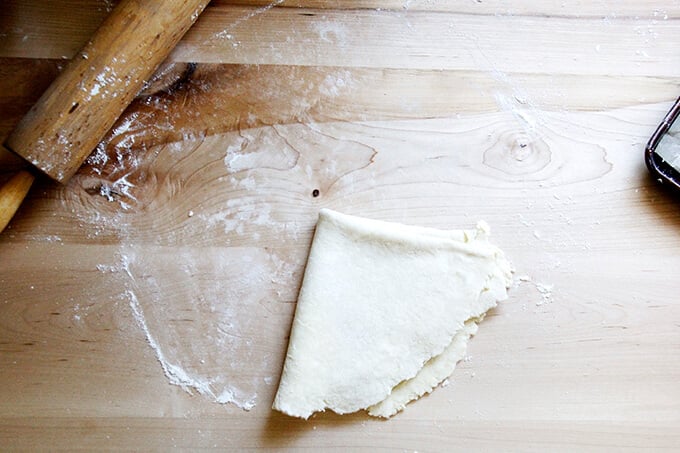
5 Recipes to Use Foolproof Pie Dough In
Bourbon Pecan Pie (No Corn Syrup)
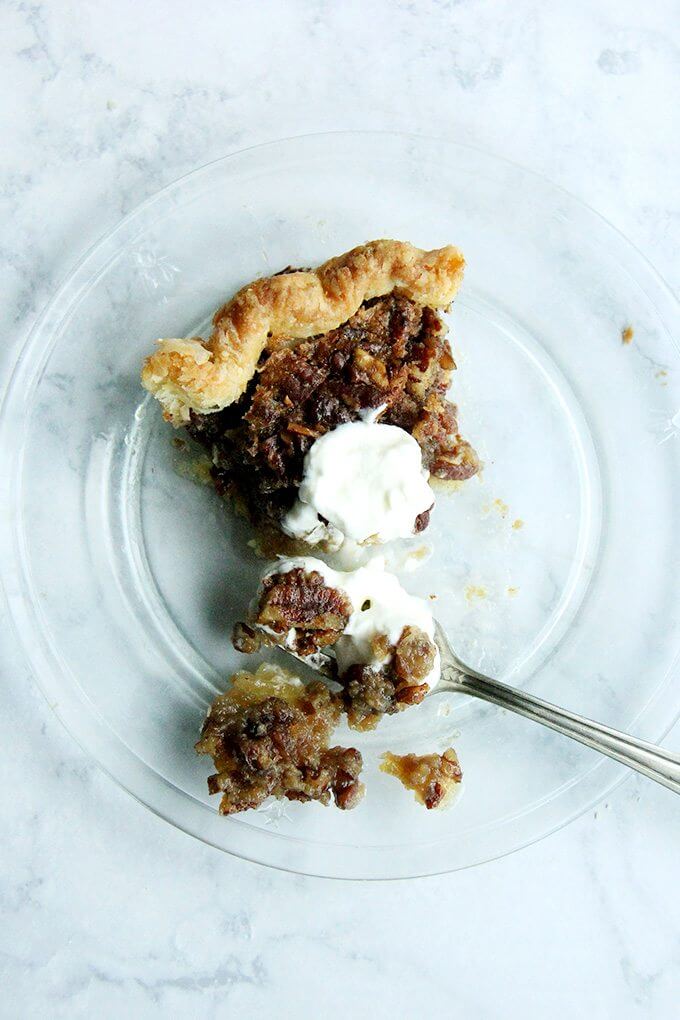
Ronnie Hollingsworth’s Most Excellent Squash Pie
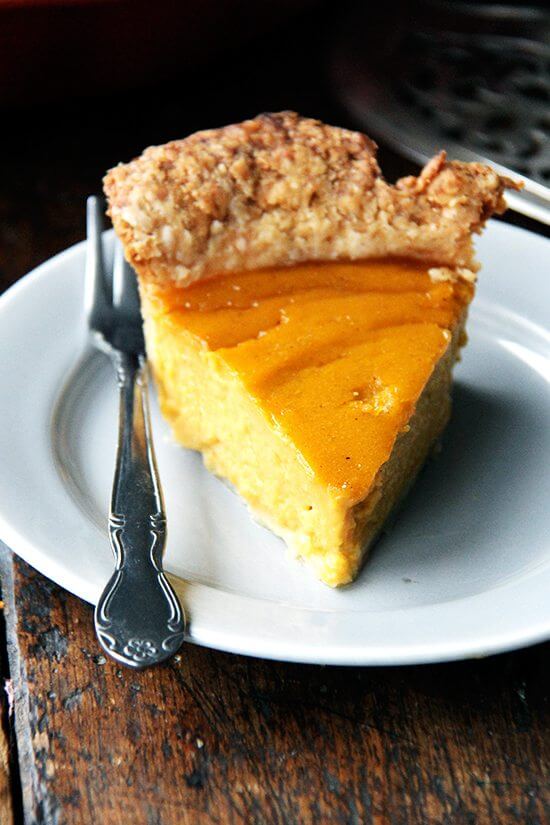
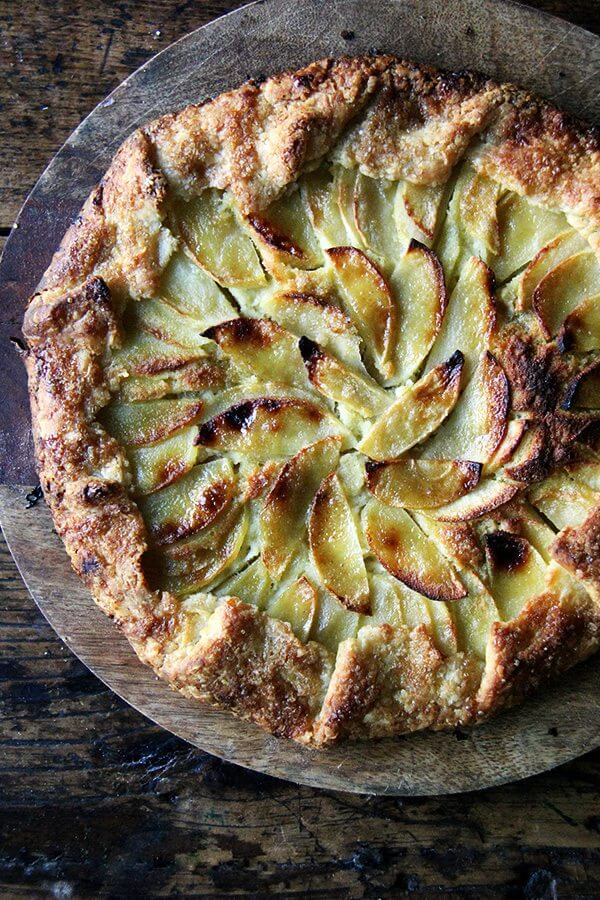
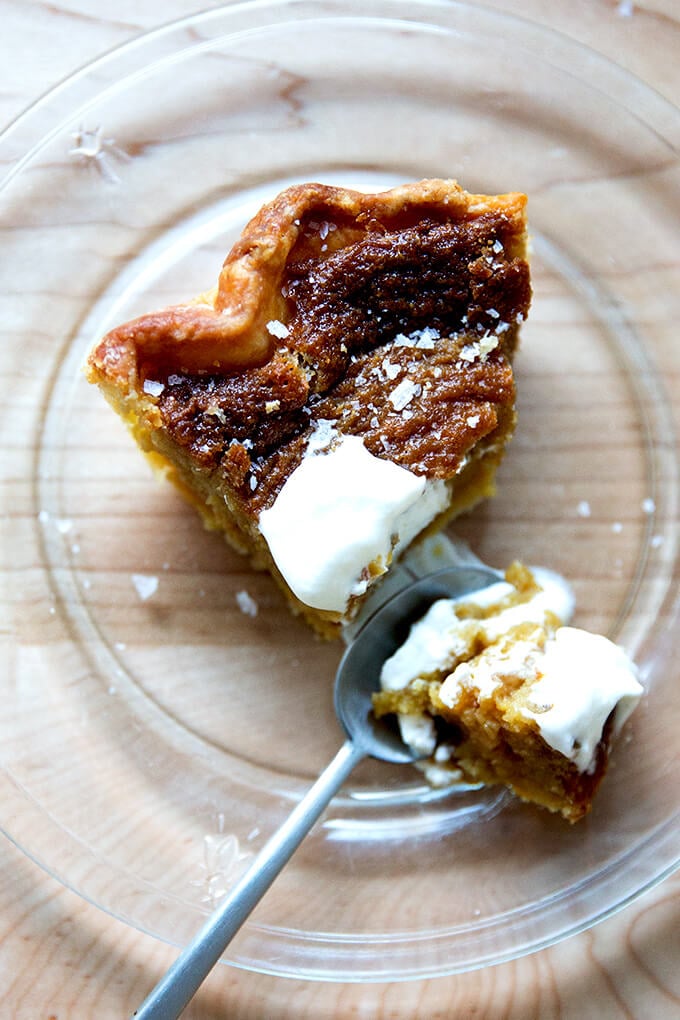
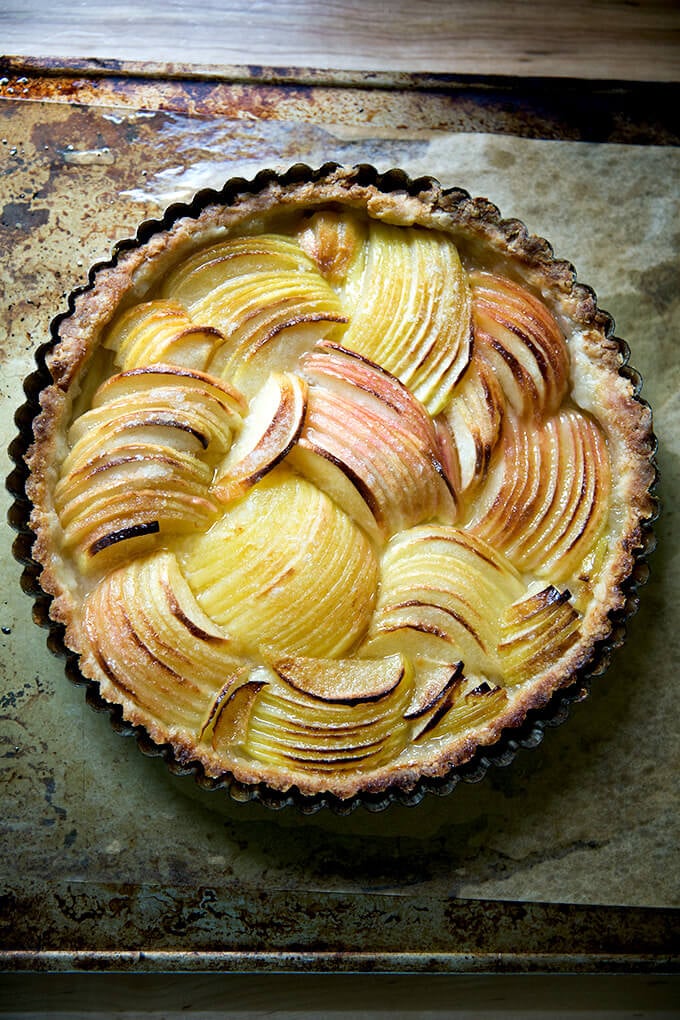
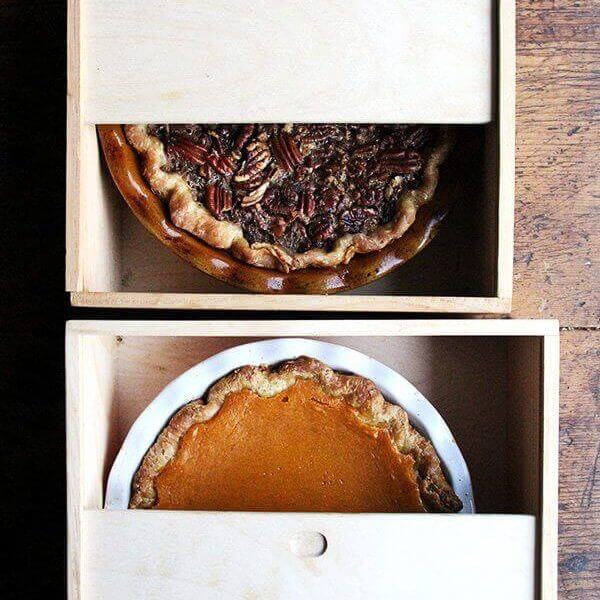
Foolproof Pie Dough Recipe
- Total Time: 20 minutes
- Yield: 2 nine-inch rounds
Description
This is the pie dough I use for everything: galettes, tarts, etc.
Dough can be made up to three days in advance and stored in the fridge or made weeks in advance and stored in the freezer. To thaw, place dough in the fridge overnight before baking.
To make a double batch: do not load your food processor with double quantities. Make the dough in separate batches — no need to wash the food processor in between batches.
Ingredients
- 2½ cups (320g) all-purpose flour
- 2 tablespoons sugar
- ½ teaspoon kosher salt
- 16 tablespoons (227g) unsalted butter, cut into small pieces and chilled
- ½ cup + 2 tablespoons (142g) ice water
Instructions
- In the bowl of a food processor, pulse the flour, sugar and salt together. Add the chilled, cubed butter. Pulse at 1-second intervals until butter is the size of peas — should be about 10 quick pulses. Add the ice water and pulse again about 10 times until the mixture is crumbly but holds together when pinched. (To make without a food processor: In a large bowl, whisk flour, sugar and salt together. Add the butter to the flour mixture, and using the back of a fork or a pastry cutter, incorporate it until it is in small pieces. Add ice water and continue to stir with fork until mixture it crumbly but holds together when pinched.)
- Lay two clean tea towels on a work surface. Dump half of the crumbly dough mixture into the center of each. Grab the four corners of the towel together and twist to create a beggar’s purse, pressing the dough into a round. Use your hands to pack and flatten the round. Wrap in plastic wrap or parchment paper, place in ziplock or other airtight bag/vessel, and stash in the fridge for 3 days or in the freezer for months.
- Prep Time: 20 minutes
- Category: Dessert
- Method: Food Processor
- Cuisine: American
This post may contain affiliate links. Please read my disclosure policy.

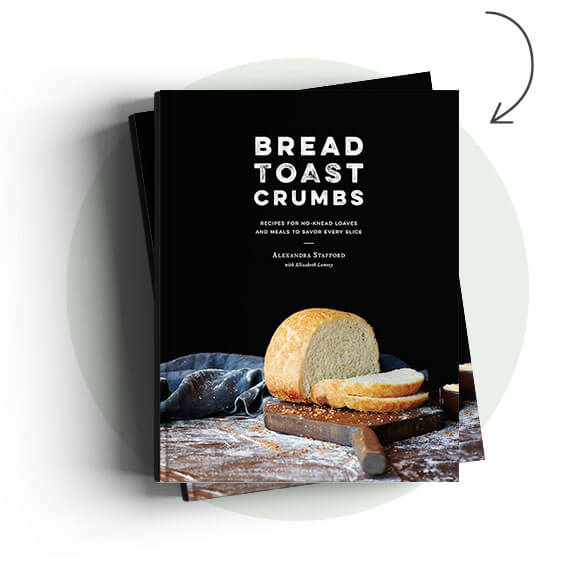

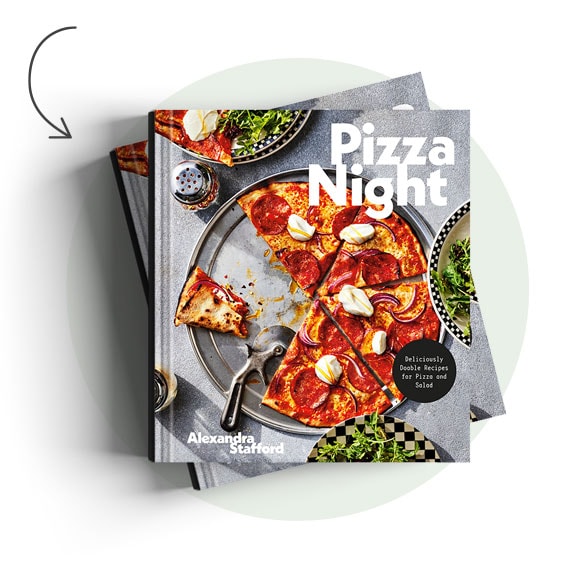
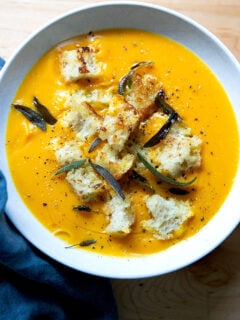

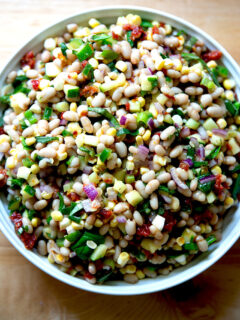
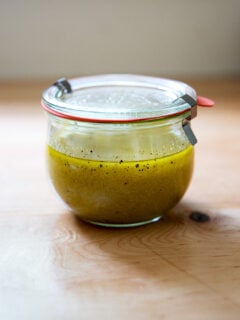
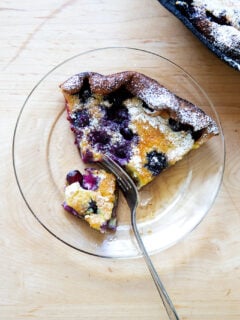


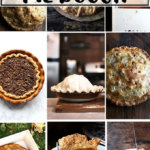
103 Comments on “Foolproof Pie Dough Recipe {Video}”
I love all your recipes and really love this technique of making our dough with the tea towel. However, when I used this recipe I seem to always get puddles of butter on the surface of my pumpkin pie? Am I doing something wrong? I was reading on another blog that it could be I’m not using a high enough temperature? About to start my cooking for this thanksgiving so any help would be appreciated!
Hi Suzanne! A few questions: Are you using the food processor or by hand? Are you using a scale to measure everything? Regarding temperature, there actually is a school of thought that baking at a lower temperature is better. Do you blind bake your pie shells?
Hi Ali!
So glad I found your pie crust method, because I made a practice batch last week from a different recipe, and it was overworked. If I’m using this crust for a savory pie, do I still add this much sugar? Thanks! Love your recipes!
Hi Rachel! You can omit the sugar for a savory pie or you can halve it or leave it the same — I don’t mind a bit of sweetness in a savory pie, but that’s completely my preference. Thanks so much for writing. So nice to hear this!
While cleaning out the frig for thanksgiving shopping I found 2 jars of strawberry preserves both nearly full – ugh. Yesterday Bromabakery.com posted on Instagram “Giant frosted Strawberry Pop Tart” Sarah recommended making your own pie crust for this easy fun recipe. I’m going to enlist husband to make the recipe and use your recipe technique for pie crust. Love the tea towel idea.
Hope you and your family have a wonderful thanksgiving- be safe.
Oh, I love this idea! I can’t believe I’ve never realized that pop tart dough would be the same as pie dough, but it makes sense. Hope they turned out well! Thanks so much for writing and thank you for the kind wishes. Hope you had a wonderful Thanksgiving as well!
Would you share what brand of food processor that is and how many cups it holds? I want to purchase a decent one. Thank you!
It’s a 14-cup Cuisinart and I cannot say enough good things about it — great size and quality.
Hi Ali,
I am sorry to say that my pie crust in the above method did not work for me as the dough was too dry to roll. I had to knead & reshape each disc in saran to soften it up; perhaps it was because my two-crust pie recipe calls for 3 cups of flour.
Hi Linda,
Did you use a scale to measure the flour and water? What type of flour are you using?
I usually dump my dough crumbles into plastic wrap and bring my pie dough together in that – is this the same idea? Thank you
Yes!
Hello Ali,
Thank you for this step-by-step guidance. Love your site!!
Question for you, does it matter the kind of pie plate that one uses? i.e. does a metal pie pan work better than a glass pie pan or the other way around?
Hi Chandana! Apologies for the delay here … I’ve been out of the country.
Yes, materials of pans do make a difference. I am partial to ceramic pans such as this one. But I would encourage you to experiment with what you have: you can make great crusts using both metal and glass pans. I follow several authorities on pie, and one is partial to glass and the other is partial to metal, so I really think it comes down to personal preference and then the baking technique employed.
Hi Alexandra – love your pie dough recipes and pizza stone recommendation- I bought the stone you recommended, but it’s very heavy – I plan on making your pumpkin pie – can I cook it on the stone?
Thanks for your early reply
Carole J
Yes, definitely! Cook it on the stone. Happy Thanksgiving!
I tried this recipe and it did not turn out well. I followed the directions exactly and my crust was tough. What could be wrong?
Hi Diane! Questions: did you use a scale to measure? What type of flour are you using? Food processor or by hand?
Of all the pie crust recipes I’ve tried, this one is hands down the best! The tea towel method was perfect. That crust came out absolutely delicious. People raved! This will be the one I use from now on.
So nice to hear this, John! Thanks so much for writing 🙂 Happy Thanksgiving!
Fabulous! Will this recipe work for a savoury tart if I just leave out the sugar?
Yes! I actually sometimes leave in the sugar or reduce it for savory preparations, but feel free to omit it 🙂
My daughter and I followed this recipe to make crusts for small heart shaped pop-tarts (hand pies?). So easy, worked like a charm and so good! From now on this is the only way I’m making pie crusts.
So nice to hear this, Pattie! And oh my goodness… how cute??? Love this idea so much. I might have to do this for my kids on Valentine’s day. So fun.
Do you need to chill the first disc of dough?
Hi Cori, do you mean before rolling it out? You don’t have to. For galettes, I often mix the dough and immediately roll out. Some bakers believe that it is best to chill the dough for a few hours to allow the flour to hydrate properly and all the gluten to relax, but I’m not convinced that it really makes a difference.
Hi, I don’t have a food processor but I’m assuming this will work using the old-fashioned rubbing – in method?
Yes, definitely. You could grate the butter on a box grater to get it into small pieces.
Just attempted a pie crust recipe with the same exact ingredients + 1/4 cup of cornmeal. Tried your method, but I dumped out a dry pile that completely collapsed when I tried to form a ball. I trust Melissa Clark, and her recipe said to keep pulsing until it formed a ball. Dumped it back in and formed a ball, but now it has no visible nubs of butter, which I think = bad crust. Starting over. Any advice?
Hi! I would just bake it… it might not be as flaky, but it won’t be bad, and I’d hate for you to waste the ingredients. Are you making a galette? Or a pie?
Have you ever used Kerry Gold or other type of high fat butter? And why K-salt instead of sea?
Thanks for your reply and sharing your trick with tea towel.
Happy Thanksgiving.
I have not tried Kerry Gold here, but I imagine it would be delicious. I can’t speak to how it will perform — I worry a little that the higher fat content might cause the crust to behave a little different in the oven. Regarding kosher salt — it’s just what I use always and love. Diamond Crystal kosher salt dissolves quickly. You absolutely can use sea salt. Happy Thanksgiving!
I love your French apple tart recipe and so does everyone that I share it with! Thanks so much! Wondering how this crust would work for a fresh fruit tart? How long would I bake the empty crust before topping it with cream cheese and fruit?
Hi! I have a post dedicated to parbaking: How to Parbake (and Blind Bake) Pie Crust + Foolproof Flaky Pie Dough